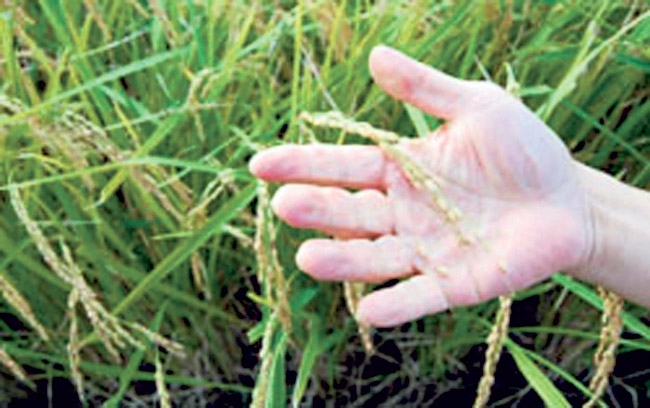It All Started With 14 Grains Of Rice
“Fourteen grains of rice.” It sounds like a lovely title for a novel, or maybe the opening line of a haiku. It could have very well been the name of a sake, or perhaps I might say “should” have been the name of a sake.
The reason why is because an entire nation’s current production of a particular sake was restarted with only 14 grains of rice.
In Japan, the most-celebrated strain of rice for sake production is Yamada Nishiki. It is considered the noblest variety of rice and is used by virtually every top sake producer in and outside Japan.
But generations earlier, in the area of Ibaraki just northeast of Tokyo, there is a story of another strain of rice specific to the region that produced sake of equal or maybe greater stature than that of Yamada Nishiki.
Enter Takaaki Yamauchi, a seventh-generation master brewer at Huchu Homare Brewery in Ibaraki province. He had heard this story of this other strain of rice and decided to search for it to see if it was true.
Little did he know that he was delving into history and was at the doorstep of a long quest. It had been popular before World War II, and was said to produce excellent sake. However, it had its drawbacks. The rice stalks grew very tall and were prone to being blown down by the wind and losing much of the grain. It also took longer to grow, and thus a later-ripening strain.
As you can imagine, growing rice deeper into winter, when inclement weather can destroy a whole crop, is not the most sound business decision for a farmer. At times, typhoons could destroy the crop, or insects would eat away at the yields of the rice, as deeper into winter they had nothing else to feed on.
So this rice strain went out of style. It not only went out of style, but was almost extinct. Yamauchi could not find any other rice grower who was currently growing it. It had disappeared completely from the fields. But he continued to pursue its trail, and finally he tracked it down.
After years of searching, he found that the Japanese government, through its Agricultural Research Center, had some. He petitioned for permission to obtain some grains as an experiment to see if it would yield good sake.
After some time, the government finally agreed. In 1988 it gave him 14 grains of rice – but not just any rice. The name of the rice is Watari Bune.
It took Yamauchi three seasons to produce enough rice to make a batch of sake. And his patience paid off. The sake that it produces, also named Watari Bune, is now a cult sake in Japan.
I just had a bottle of the Watari Bune Junmai Ginjo 55 for dinner last night. This sake is particularly showy. It has a really complex flavor and aroma profile, showing things from earth and mushrooms to bananas and flowers. It is not wimpy; it has impact with flavor from the entrance all the way to the long finish. It seems to want to touch every single taste bud on the palate.
The Junmai Daiginjo is one of the most highly sought-after and recognized sake in all of Japan. It is more elegant than the Ginjo version, with layers of fruit and a totally Zen-like balance between structure and flavor. The finish of this sake goes on forever until a faint whisper finally leaves your palate like the touch of soft hair brushing your skin.
We are all truly lucky to be able to drink these sake. They might have been gone, were it not for the work of Takaaki Yamauchi and those 14 grains of rice.
Roberto Viernes is a master sommelier. Email rviernes@southernwine.com or follow him on Twitter @Pinotpusher.






